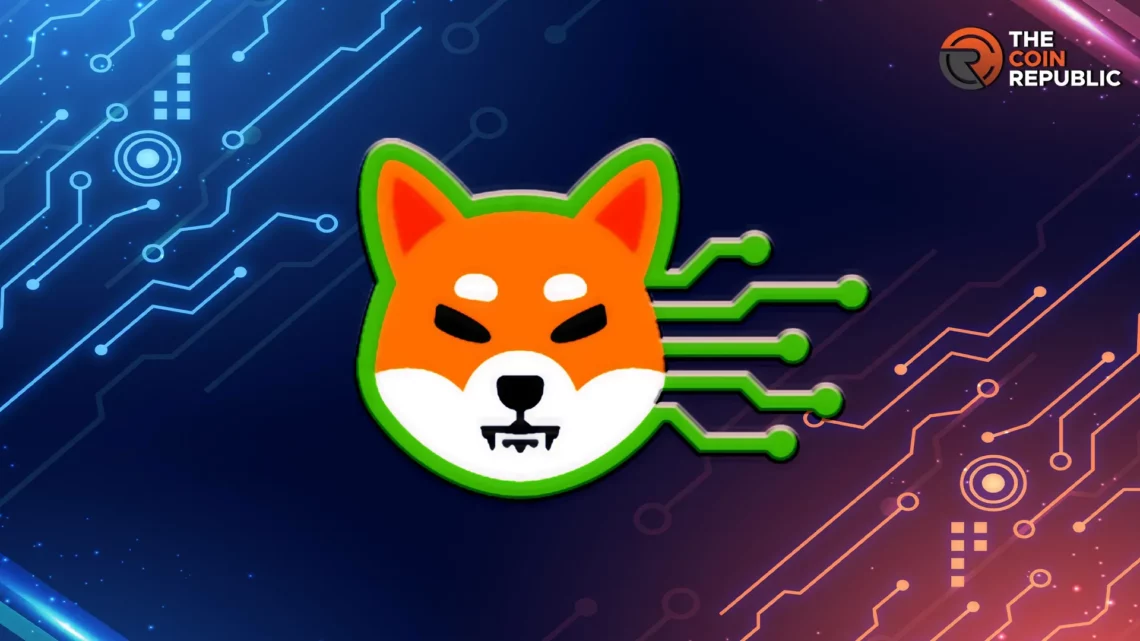Shibarium is a famous Layer 2 blockchain network established on the Ethereum blockchain, seeking to increase transaction speed at a lower cost.
Shibarium is on the track to establishing itself as a formidable layer 2 blockchain, within the Shiba Ecosystem. Its layer 2 network is designed to expand and encourage innovation, solutions, and enhanced security within the domain of Decentralized Finance (defi).
As it enters its beta phase, its objective is to gather valuable insights, improve security, and integrate both delegators and validators through its initial release.
At the core of the platform infrastructure is its unique blend of Plasma and Proof of Stake (PoS) side chains, which facilitate the expansion of blockchain capabilities. The most notable aspect of the network structure is its versatile validation layer, which operates independently across various execution environments.
When Was Shibarium Released?
The Shibarium blockchain was officially launched on August 17, 2023. Initially slated for a 2022 release, the development team opted for a cautious strategy, securing the mainnet would only go live following an extensive and thorough testing period.
Despite high expectations, the initial rollout encountered some hiccups. A significant backlog of transactions stalled in limbo, with approximately $1.8 million in Ether stuck in processing. Fortunately, the Shiba Inu team addressed these complications swiftly, and within two days, its operations were running seamlessly.
Working of Shibarium Network
Shibarium is set to significantly reduce the load on the Ethereum blockchain by offloading a substantial volume of transactions. This shift promises to improve processing speed without sacrificing security. The platform’s token-burning strategy is designed to regulate inflation effectively.
Operating as a transaction handler, it maintains Ethereum’s robust security framework. With the bulk of network operations managed internally, Ethereum’s burden of handling excessive transactions is alleviated, paving the way for better and more secure processing.
Ethereum’s transition to Proof of Stake (PoS) alleviated some of the network’s congestion issues and reduced gas fees from their previous rates transaction. Despite these improvements, Layer 2 solutions like Shibarium are still essential to prevent the base blockchain from becoming bogged down by a multitude of projects.
To reduce SHIB coin inflation and potentially drive up its value, it implements a token-burning feature. Transaction fees paid in SHIB tokens will be permanently removed from circulation, thus reducing the total supply and contributing to token price stability.
Token burning involves sending tokens to specialized wallets that can receive but not send out tokens, effectively removing them from existence. This continuous process of token destruction serves as a countermeasure against inflation in cryptocurrency ecosystems.
Features of Shibarium Network
Staking Dynamics: In Shibarium’s ecosystem, stakers contribute to the network’s integrity by allocating their stakes to validator nodes. These validators perform the critical task of processing the ledger and casting votes through dedicated vote accounts, which stakers can support with their stakes.
Ethereum Layer: At the foundation of the network PoS mechanism lies the Ethereum layer, which comprises a suite of smart contracts on the Ethereum blockchain. These contracts are pivotal in managing the myriad functionalities that keep the Network operational.
Heimdall Layer: As a crucial component of a network tri-layered structure, the Heimdall layer assumes multiple vital roles. It oversees the management of validators, the appointment of block producers, and the coordination of state-sync processes among Ethereum, Shibarium, and other system elements.
Validator Key Management: The network framework places significant emphasis on the management of validator keys within the Heimdall layer. Validators are equipped with two types of keys—the signer key and the owner key—to administer their responsibilities on the network. These keys are instrumental in managing validator operations effectively.
Understanding Shibarium Coins
The network introduced a diverse array of digital currencies, each with distinct functions, marking a departure from Shiba Inu’s current framework. The ecosystem features a variety of tokens, all adhering to the canine-inspired naming convention:
SHIB: This is the primary ERC-20 token of the Shiba Inu platform. Since its launch, SHIB value has been volatile, yet it has never overtaken the $1 level.
BONE: Initially serving as a governance token within ShibaSwap, BONE has expanded its utility within the network, where it now also functions as a payment token for developers. The total number of BONE tokens is fixed at 230 Million.
LEASH: This token is scarce, with only 107,646 available. LEASH holders can stake their tokens to receive rewards, which include the ability to mint xLEASH tokens upon unstaking.
Conclusion
Shibarium indicates a new era in blockchain technology with its innovative layer 2 framework. Created to expand existing blockchain infrastructures, layer 2 solutions like it optimize transaction speed and overall network efficiency. By working alongside the Ethereum main chain, Network significantly lightens Ethereum’s workload, leading to faster transactions and lower costs. This development promises to revolutionize the Shiba Inu ecosystem, enhancing its usability and reach.
FAQs
What Is Shibarium?
The Network represents an advanced layer-2 framework within the Shiba Inu network, designed to accelerate transactions and minimize costs. Originating from the vision of Ryoshi, the enigmatic founder of Shiba Inu, its inception is rooted in the pursuit of genuine decentralization and diminishing the dependency on the Ethereum network.
What are Shibarium Coins?
The network has presented three digital currencies – SHIB, BONE, and LEASH – each with different features, marking a departure from Shiba Inu’s current framework.

Adarsh Singh is a true connoisseur of Defi and Blockchain technologies, who left his job at a “Big 4” multinational finance firm to pursue crypto and NFT trading full-time. He has a strong background in finance, with MBA from a prestigious B-school. He delves deep into these innovative fields, unraveling their intricacies. Uncovering hidden gems, be it coins, tokens or NFTs, is his expertise. NFTs drive deep interest for him, and his creative analysis of NFTs opens up engaging narratives. He strives to bring decentralized digital assets accessible to the masses.


 Home
Home News
News








